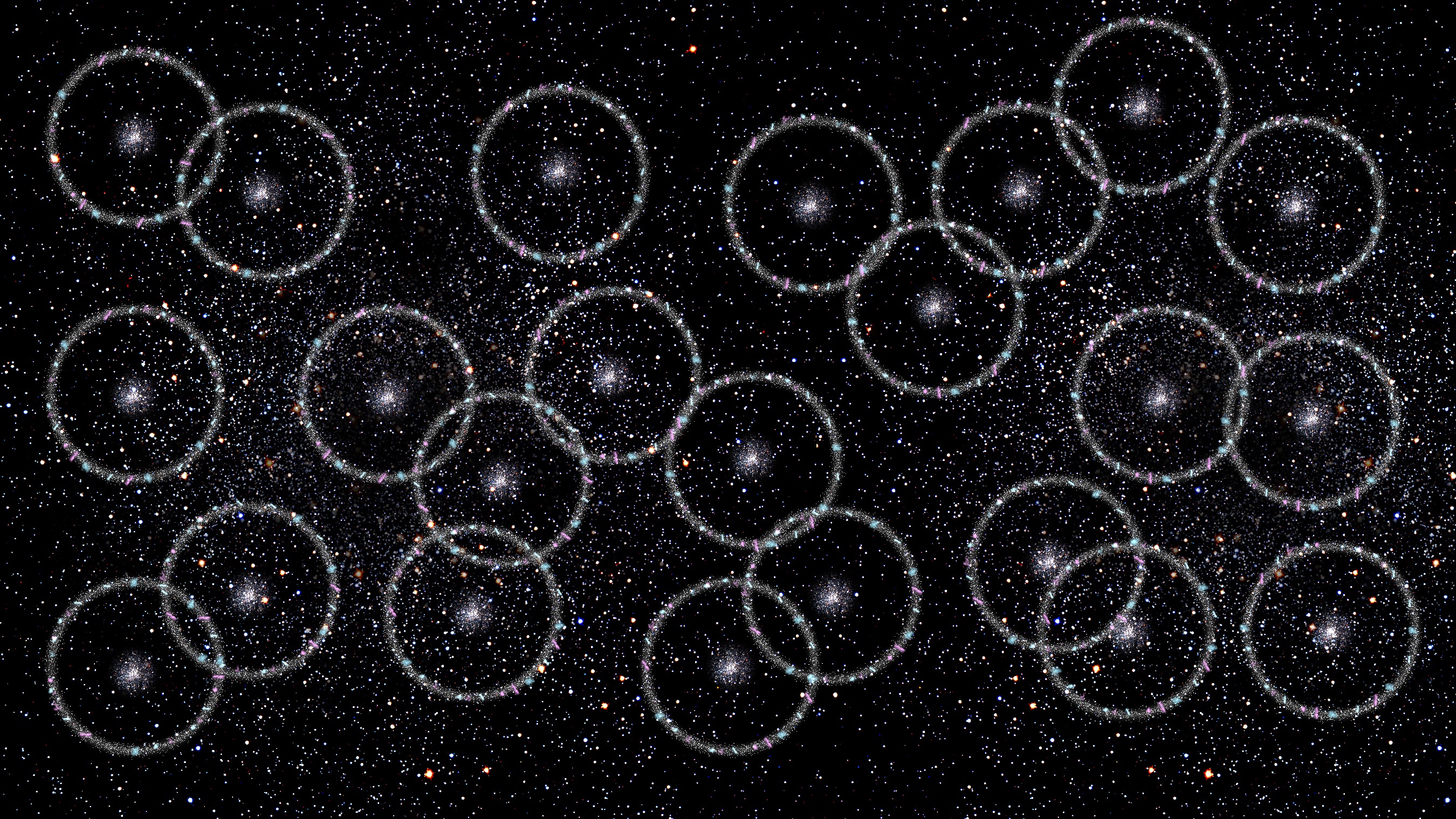How Can We Still See The Disappearing Universe?
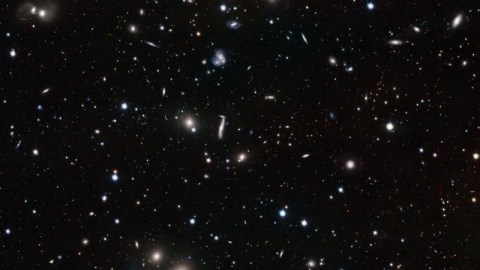
If dark energy is causing the Universe to disappear, how can we still find and see ultra-distant stars and galaxies?
In the 1920s, scientists discovered that the Universe was expandingbased on measurements of the distances to galaxies and how redshifted their light was. In the 1990s, we learned that the Universe wasn’t simply expanding, but that distant galaxies are moving to greater distances at an accelerating rate. The underlying cause has been identified as dark energy, which is causing the Universe to disappear as time goes on.
It’s true: there are some 2 trillion galaxies within the observable Universe, and 97% of them are already beyond our reach, even if we left today at the speed of light. But even though we cannot reach them, we can still see them. Even more puzzling is this: new, never-before-seen galaxies are continuously revealing themselves to us as time goes on. We may not be able to reach the disappearing Universe, but we can still see it. Here’s how.
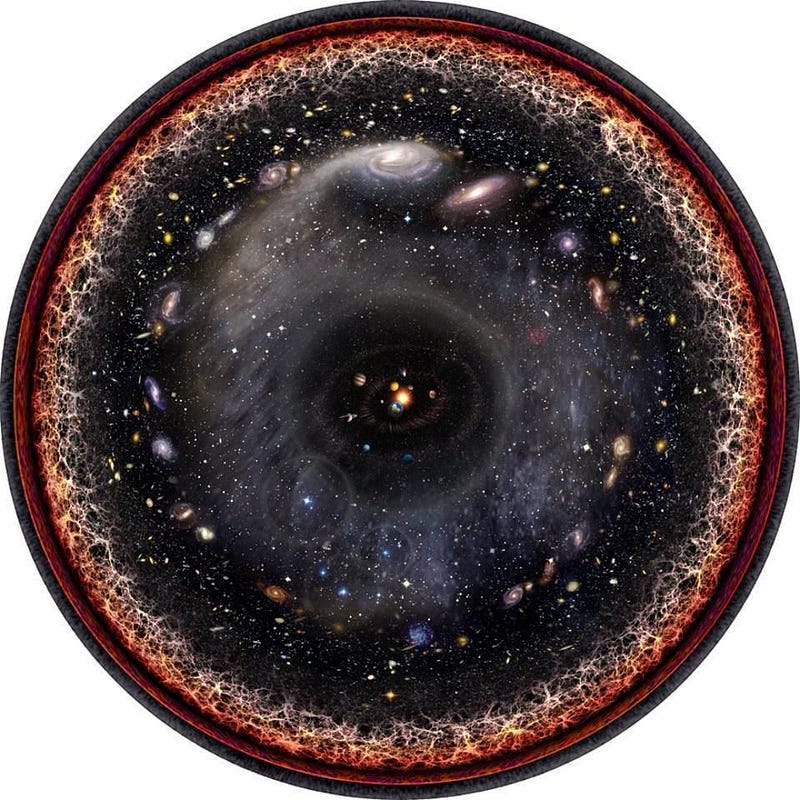
Under the rules of General Relativity, our theory of gravitation, it’s impossible for our Universe to remain static. Unless we’re willing to throw out one of our two most successful physical theories of all-time, it’s inescapable that our Universe must be either expanding or contracting.
The reason is simple: if your Universe is filled with equal amounts of matter and energy everywhere and in all directions — like we observe our Universe to be — we can calculate an exact solution for how that spacetime evolves. Depending on only three factors:
- what the initial expansion or contraction rate is (including zero as a possibility),
- how much total matter-and-energy is present within the Universe,
- and what the ratios of the different types of energy (matter, dark matter, neutrinos, radiation, dark energy, etc.) are,
we can derive what both the past and future histories of the Universe are.
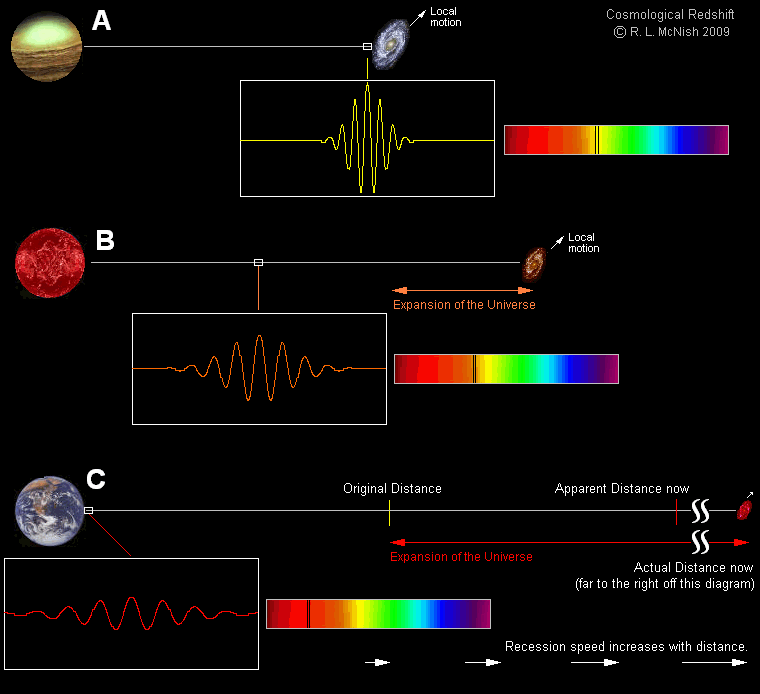
Over the past few decades, astronomers have been able to determine what the Universe looks like today on extragalactic scales. The way galaxies clump together in groups, clusters, and along filaments have enabled us to understand the large-scale structure of the Universe. When you factor in our observations of the Cosmic Microwave Background, which provides the seeds of structure that grew up into the galaxies we have today, we get a compelling end-to-end picture of how things came to be the way they are today.
When we start at the beginning and come forward in time, we get a single, consistent conclusion. Our Universe has been around for 13.8 billion years since the Big Bang, is made up of 68% dark energy, 27% dark matter, 4.9% normal matter, and 0.1% neutrinos, photons, and everything else combined, and will never recollapse.
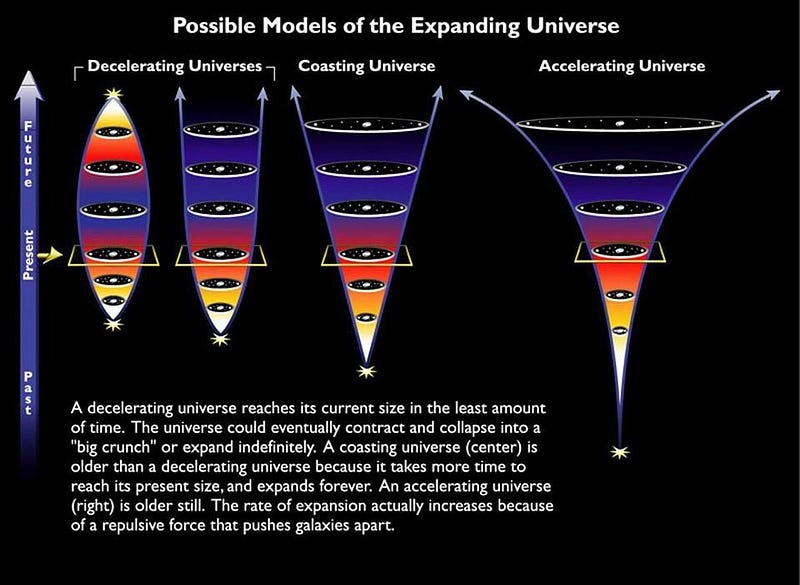
If you were to take a single, nearby galaxy, and ask how it would appear throughout time from our perspective, here’s what you’d see. Over time, it would undergo its intrinsic evolution: it would attract smaller, satellite galaxies, absorbing and cannibalizing them, forming new stars in waves when this occurs. If it collides with a similarly-sized galaxy, it would create a starburst, leading to an elliptical galaxy but using up the star-forming gas.
But this galaxy, even as it evolves, would get farther and farther away, and would appear to redshift by greater and greater amounts over time. When the galaxy reaches a critical distance from us — about 15 billion light-years away — its redshift appears greater than 1, indicating that it’s reached a crucial location, straddling the difference between what is and isn’t reachable, in principle, by something traveling from us at the speed of light.
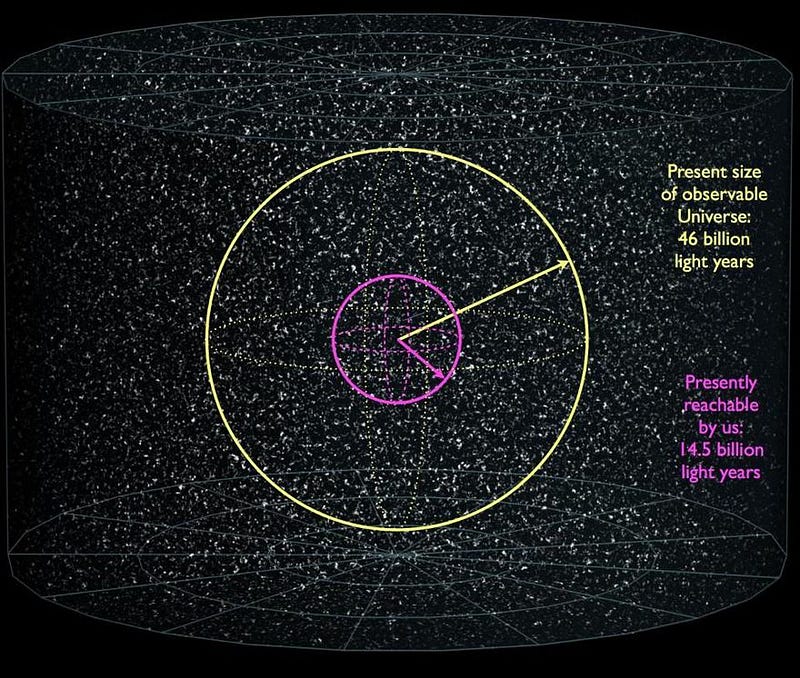
But if you were to look at a single, ultra-distant galaxy, you’d see something very different. Assuming the galaxy is visible today, you’d see it as it was in the distant past: back when the light was first emitted, and stretched after a multi-billion year journey of traveling through the expanding Universe. The light would be severely redshifted — to more than double its original, emitted wavelength — and you’d see the galaxy as it was when it was far younger and less evolved than the galaxies we see today, 13.8 billion years after the Big Bang.
As time went on, if you fast-forwarded the clock by billions of years, you’d see the light from this galaxy:
- get redder,
- get fainter,
- indicate that it was at greater and greater distances,
- reach a limit as far as the amount of galactic aging it would show.
Even if you watched it for tens or hundreds of billions of years, it would never evolve to the same point that ours has. Its age, as seen by us, would never reach 13.8 billion years.
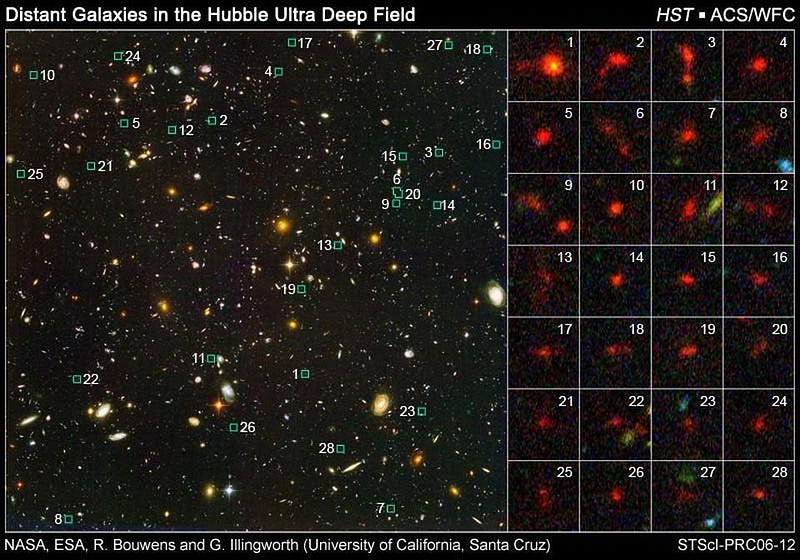
In fact, we can even think about what you’d see if you were to look at a galaxy whose light hasn’t arrived at our eyes yet. The most distant object we can see, 13.8 billion years after the Big Bang, is presently 46 billion light-years away from us. But any object that’s presently within 61 billion light-years of us will someday have that light eventually reach us.
That light was already emitted, and is already on its way to us. In fact, that light is already most of the way there; it’s closer than the 15 billion light-year limit of what we could possibly reach if we left for it at the speed of light. Even though the Universe is expanding, and even though the expansion is accelerating, that journeying light will someday arrive at our eyes, giving us, in the far future, the ability to see even more galaxies than we can today.
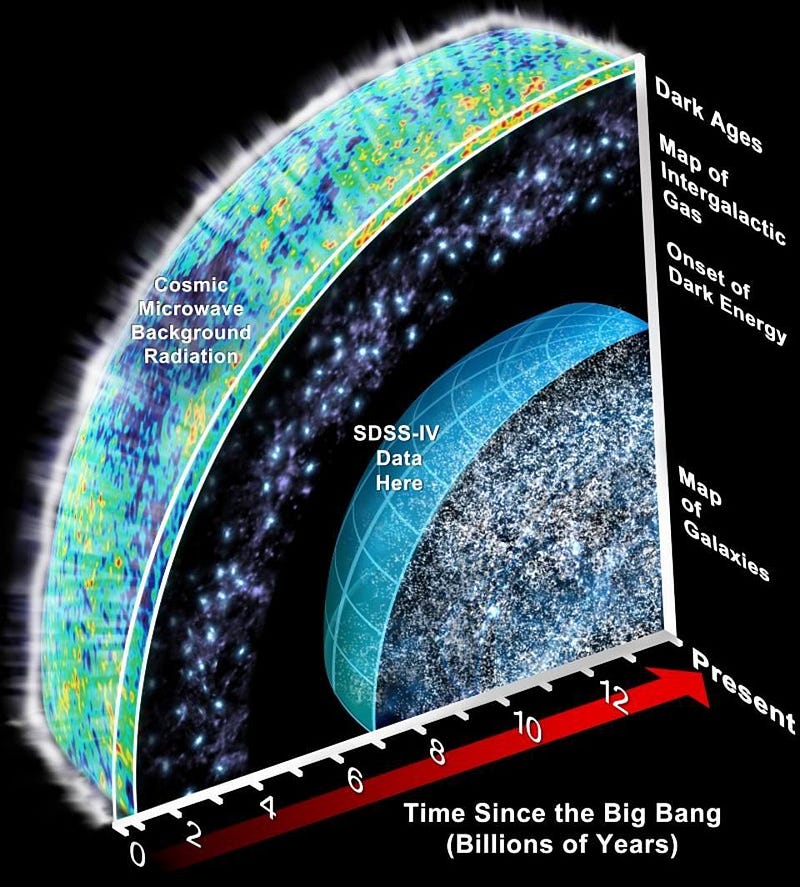
While, in principle, there are 2 trillion galaxies in our presently-observable Universe, that number will increase to 4.7 trillion in the very far future.
But we just said that the Universe is disappearing. How, then, is it possible that not only can we still see the disappearing Universe, but we’ll be able to see even more of it in as time goes on?
This requires us to think very deeply about what we mean when we talk about a distant galaxy disappearing when it comes to dark energy. To put things in perspective, let’s imagine what we’d see in a Universe that were made of 100% matter: a Universe without dark energy. If this were the case, a distant galaxy wouldn’t accelerate away from us as time went on, but would have its apparent recession speed drop to lower and lower values as time went on.
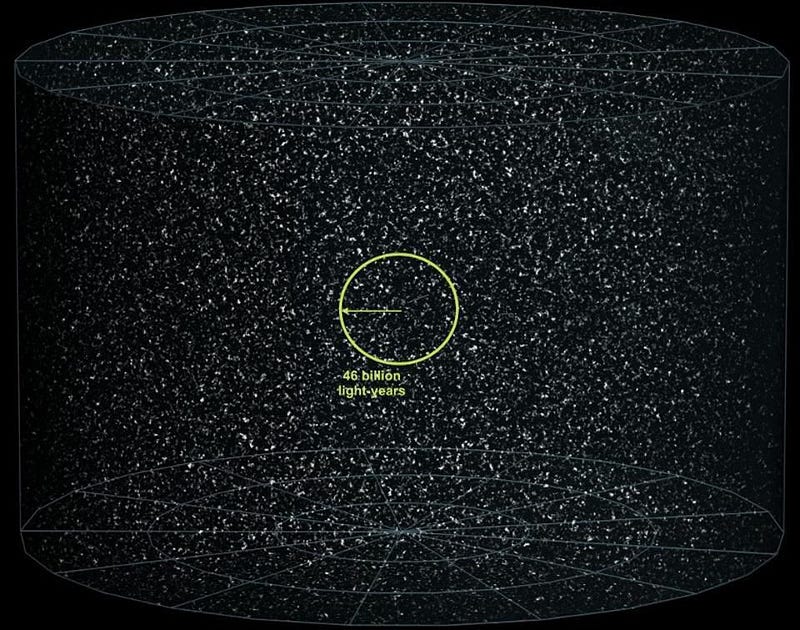
This means, as the Universe ages, any object that’s visible to us will have its redshift decrease over time. As the clock ticks forward, newly-emitted light will travel through the Universe and eventually reach our eyes; as we age, the distant galaxy will age, with no limit in sight. In fact, in a Universe without dark energy — in a decelerating Universe — there is no limit to the number of galaxies we can see, or to the apparent age of those galaxies. So long as our Universe exists, there will be new horizons, frontiers, and epochs to explore.
In a decelerating Universe, there is no limiting cosmic horizon. There is no galaxy so distant that we cannot envision its light arriving after an arbitrarily long duration of time. And once that light gets to us for the first time, all the light emitted thereafter will also eventually arrive at our eyes.
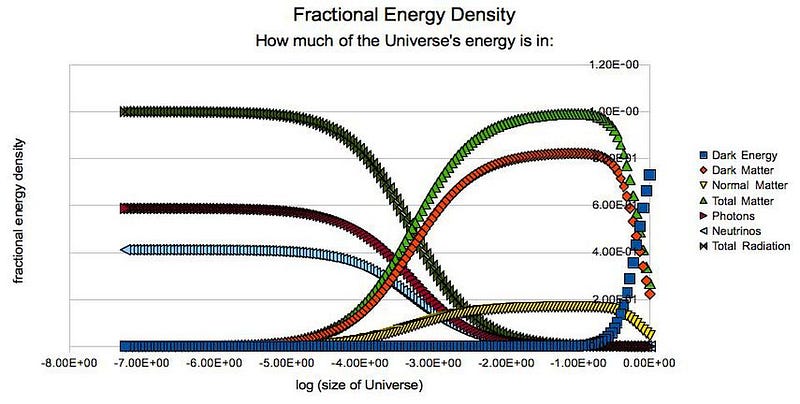
But our Universe isn’t decelerating, and free of dark energy. The dark energy we have sets the distance scale and timetable for acceleration, and informs us as to where that cosmic horizon is. From its presence, and the observations we use to infer its existence, we learn the following about a galaxy located:
- closer than 15 billion light-years away: we will someday see it as it is today: 13.8 billion years after the Big Bang, and we could reach it if we set out for it at the speed of light.
- between 15 and 46 billion light-years distant: we will always see it, but its age will appear to asymptote to a finite value that’s smaller than 13.8 billion years, and we can never reach it, even if we left today at the speed of light.
- between 46 and 61 billion light-years away: we cannot yet see it today, but will see it someday in the far future and forever thereafter, and it will never appear even as old as the earliest galaxies currently visible today. We can also never reach it.
- greater than 61 billion light-years from us: we will never see or reach it, and anyone from there can never see or reach us.
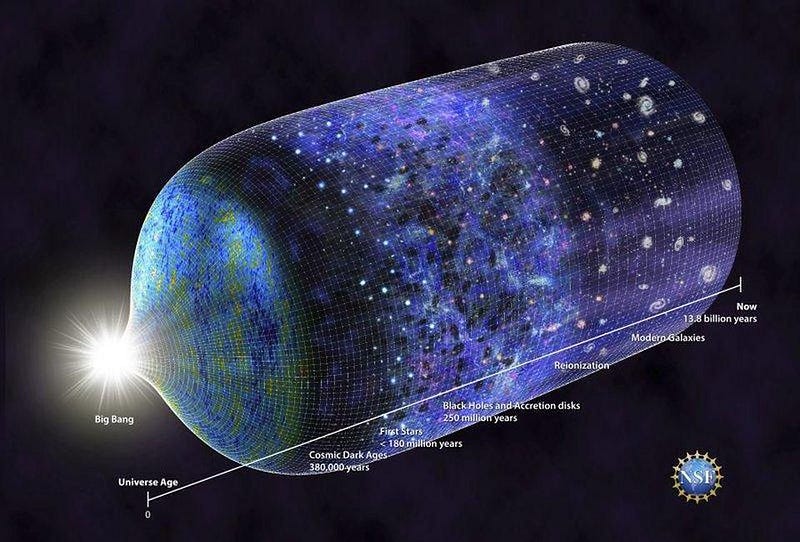
The reason we can see these ultra-distant galaxies is that they were once extremely close to us, and emitted light at a very early time that was sent our way when the Universe was much younger and smaller. Even as the Universe has expanded, and even though the expansion accelerates, those photons, emitted all those billions of years ago, will eventually arrive at our eyes. Moreover, the light emitted since then will continue to arrive here, even if the light emitted at present is too far away to ever reach us.
There will be observational challenges, as there will be fewer photons arriving with time, and the photons themselves will be redder and carry less energy. But if we build larger and more sensitive telescopes in the right wavelength range, we should be able to see progressively more galaxies as time goes on — up to a maximum of 4.7 trillion, total — even in a dark-energy-dominated, disappearing Universe.
Ethan Siegel is the author of Beyond the Galaxy and Treknology. You can pre-order his third book, currently in development: the Encyclopaedia Cosmologica.




